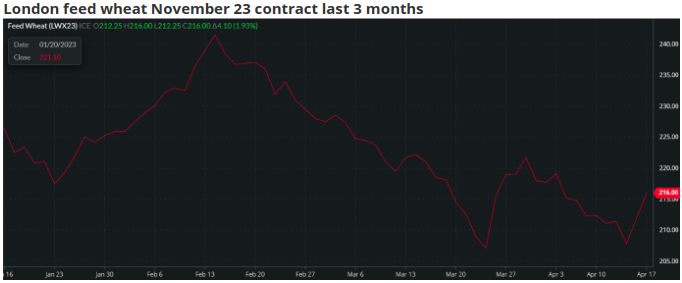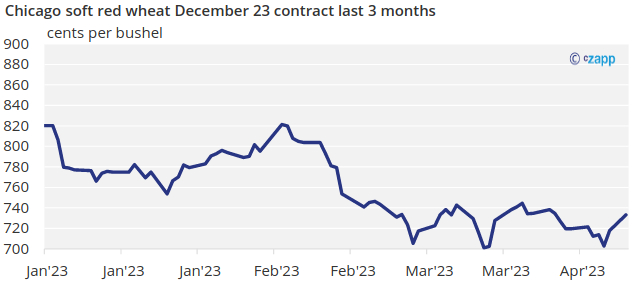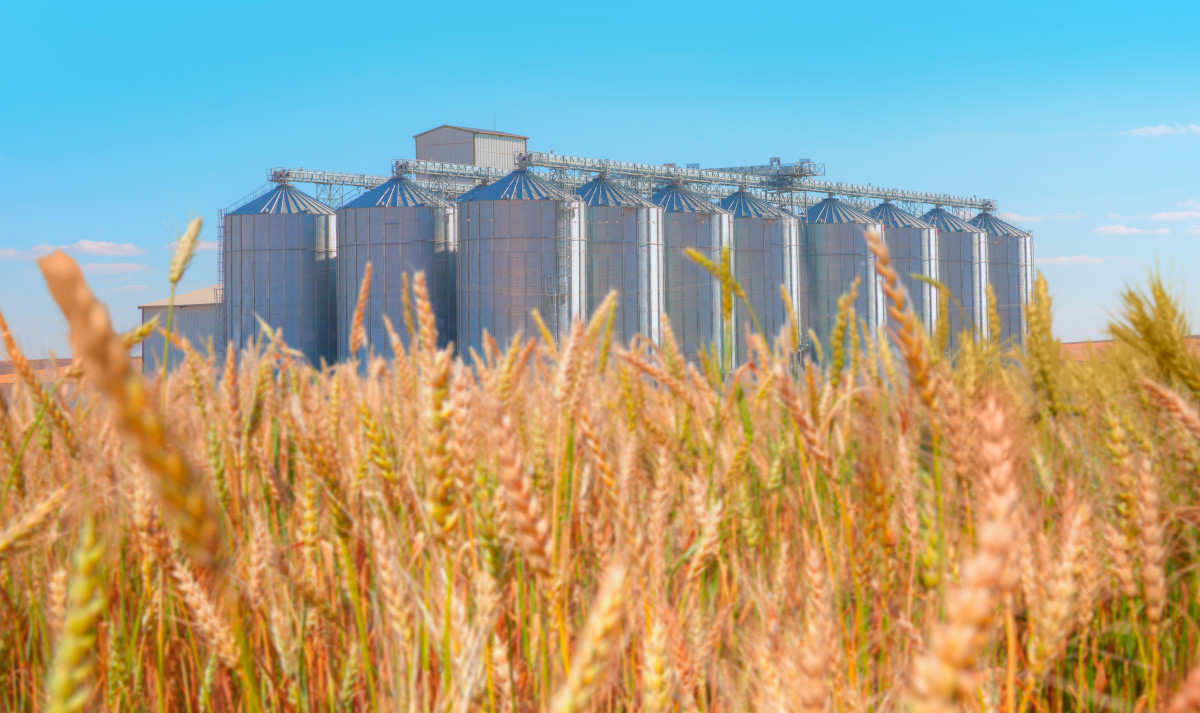Insight Focus
- China, a new global leader in wheat imports.
- The Black Sea grain corridor under threat
- Tight wheat stocks at year end.
Introduction
Wheat news often follows certain seasonal patterns. In April market participants are usually contemplating weather and its impact on the upcoming Northern Hemisphere harvest production numbers.
This year, as with 2022, major political issues seem to be stealing the headlines.
Despite concerns for wheat plants in the US, Russian participation in the Black Sea grain corridor is disrupting the usual market thoughts.
It is also worth noting an interesting new leading wheat importer on the world market.
Market
We can see from the charts below that markets are seeing another mini rally from the recent lows.
The rise in prices is being driven mainly by problems effecting the Black Sea grain corridor, together with weather issues and the USDA forecast for lower world stocks.

Source: Barchart Commodityview


Market observations
Ukraine exports
The Black Sea grain corridor agreement was a success story for the wheat market in 2022. Brokered by Turkey and the United Nations between Russia and the Ukraine, aiding shipments of grains, including wheat, from Ukraine.
Russia has regularly expressed frustration as they feel that Russian exports of agricultural grains and fertilisers are hampered through the Black Sea, while their participation in the agreement aids export from Ukraine, a country that the Russian’s are at war with.
The disruption to Russian shipments does not come as a surprise. With a multitude of sanctions imposed over many parts of the Russian economy, securing vessels willing to work with Russian companies, that can get adequate insurance, is unlikely to be as easy as pre-February 2022, prior to Russia’s invasion.
As a consequence, last month, when the agreement was renewed, Russia agreed to an extension of 60 days, as opposed to the previous 180 day agreement.
Reports now suggest that Russia is preventing the inspection of vessels in Istanbul, Turkey. With Russia adding that the agreement’s future is not bright, there is concern that the problems will escalate in the near future.
In an attempt to bypass the usual route of Black Sea shipments, Ukrainian wheat has been passing through neighbouring land border nations.
However, as the Black Sea routes to market are looking fragile, Poland, Hungary, Romania and Slovakia are all expressing concerns as Ukrainian wheat supply depresses their own local farmer returns.
With these issues, Ukrainian wheat exports need some good news over coming days and weeks to avoid considerable reductions in movements.
Weather and world stocks
Wheat crop reports from the United States continue to paint a less than rosy picture for harvest prospects.
US winter wheat conditions are said to be only 27% good/excellent, the lowest on record for this time of year.
With Spring wheat planting at 3% complete, vs 8% last year, projections are less than ideal.
In its recent April monthly WASDE report, the USDA estimated year end global wheat stocks at 265.05 million metric tonnes (mmt), down from 267.20mmt last month and 272.09mmt last year.
China
Another interesting development on the world market is the WASDE estimate for China’s wheat imports for 2022/23 at 12mmt. This gives China the newfound position as the world’s largest wheat importer, surpassing the 10.5mmt for Egypt.
Considering that this is four times the levels in as many years, we have seen a huge lift in imports, despite China being both the world’s largest producer at 139.76mmt and year end stock holder at 139.58mmt.
Conclusions
The usual harvest guesswork is hard at play, with the weather in the US, plus dwindling global wheat stocks forecast for the marketing year end.
Uncertainty surrounding Black Sea exports, coupled with Ukrainian export hurdles concerning their near neighbours, some difficult diplomatic discussions are needed swiftly.
As China becomes the world’s largest importer, as well as producer and holder of wheat there are some new and intriguing dynamics ahead for trade flows.
Markets may have calmed somewhat since the volatile heights of 2022, but the potential for disruption remains a very real prospect.













